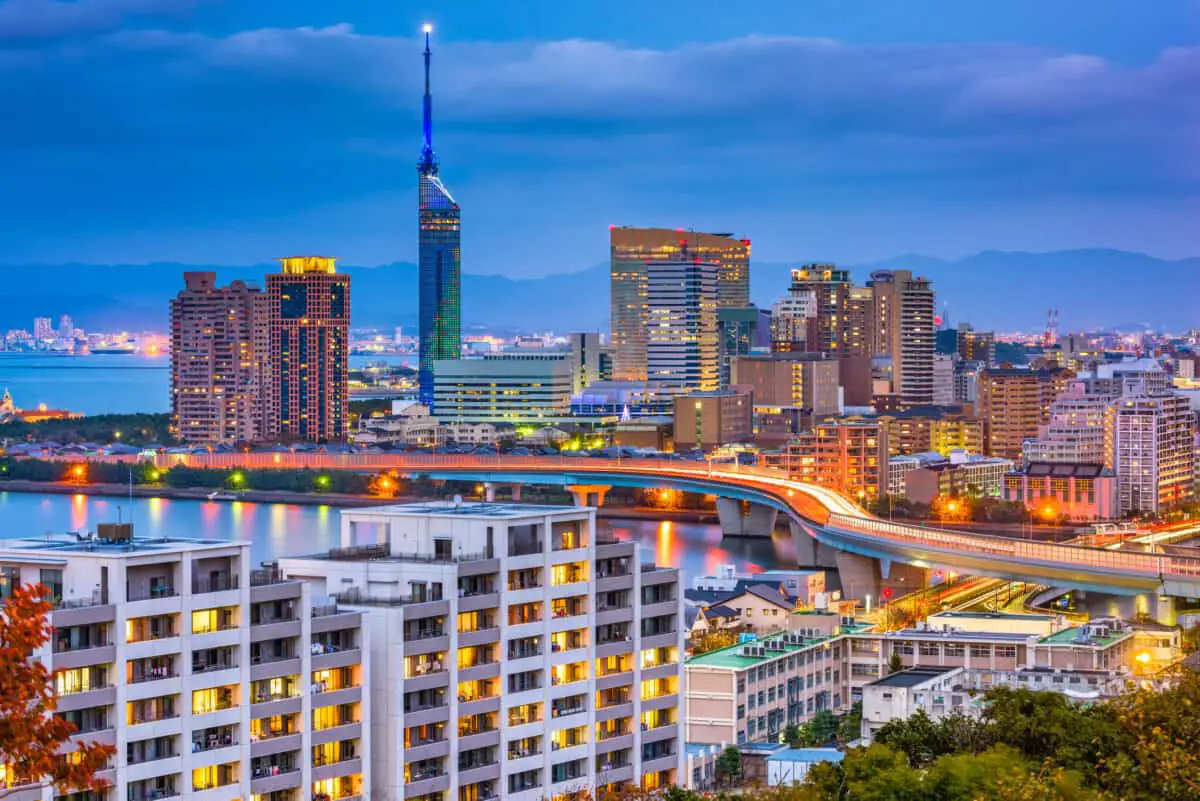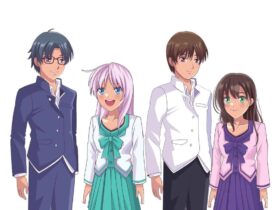On the northeastern coast of Kyushu, Japan’s southernmost and third largest island rests the peaceful and gorgeous city of Fukuoka (福岡). It has a rich history of being one of the most important harbors in Japan due to its close proximity to the Asian mainland.
Fukuoka sits as one of Japan’s top 10 most densely populated and fastest growing cities, coming in at number five. But it is Japan’s second largest port city. It comes divided into separate halves, which stems from their history of actually being two disparate cities.
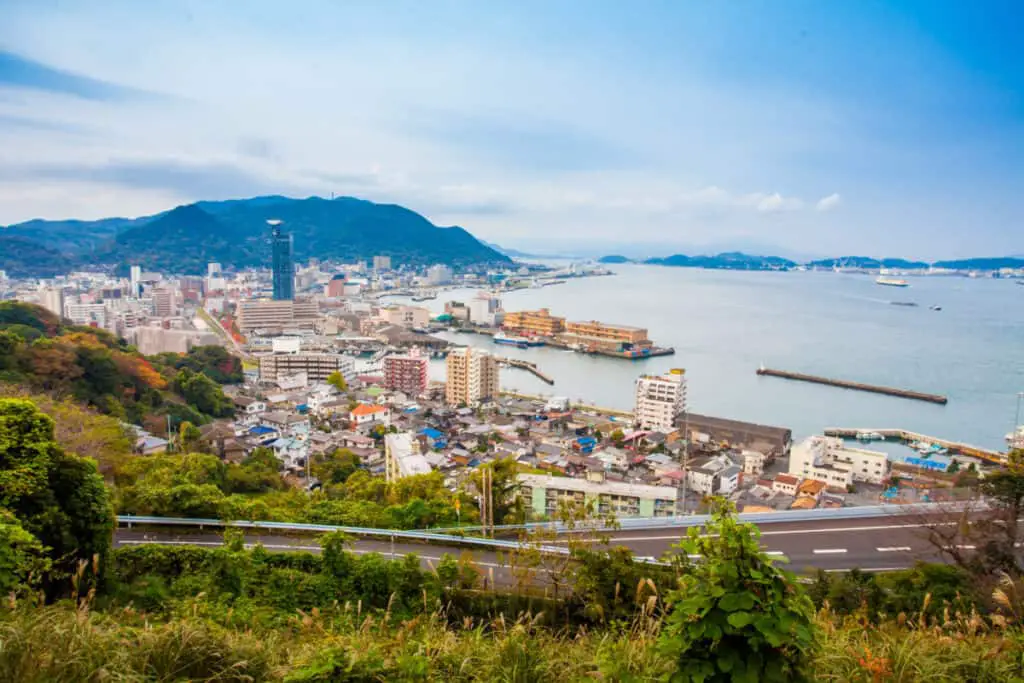
History of Fukuoka City
For centuries, this harbor town has been the bridge between Japan and the rest of the Asian world. As a matter of fact, it’s closer to Seoul, Korea, and Shanghai, China than it is to Tokyo.
Today it remains a focal point for exchange and transportation, providing a great portion of what makes up Japan’s economic powerhouse.
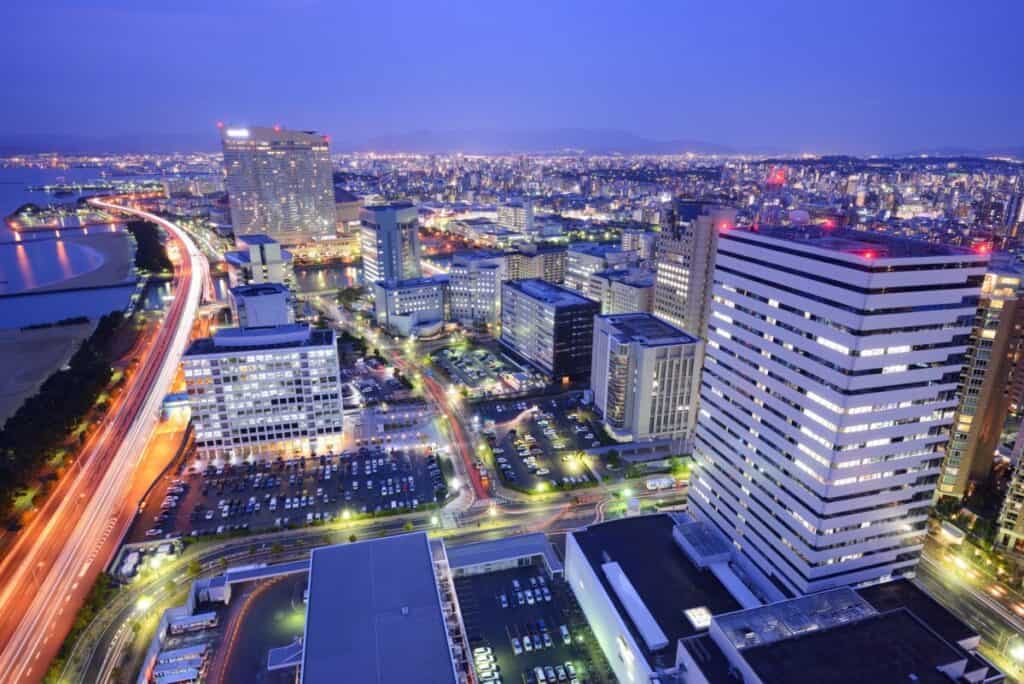
Connections to Mainland Asia
But this special location is what makes Fukuoka very different from the rest of Japan.
It’s actually a blend of many Asian cultures, but quintessentially Japanese in every way. Trading and commerce from Vietnam, Korea, and China date as far back as the Old Stone Age.
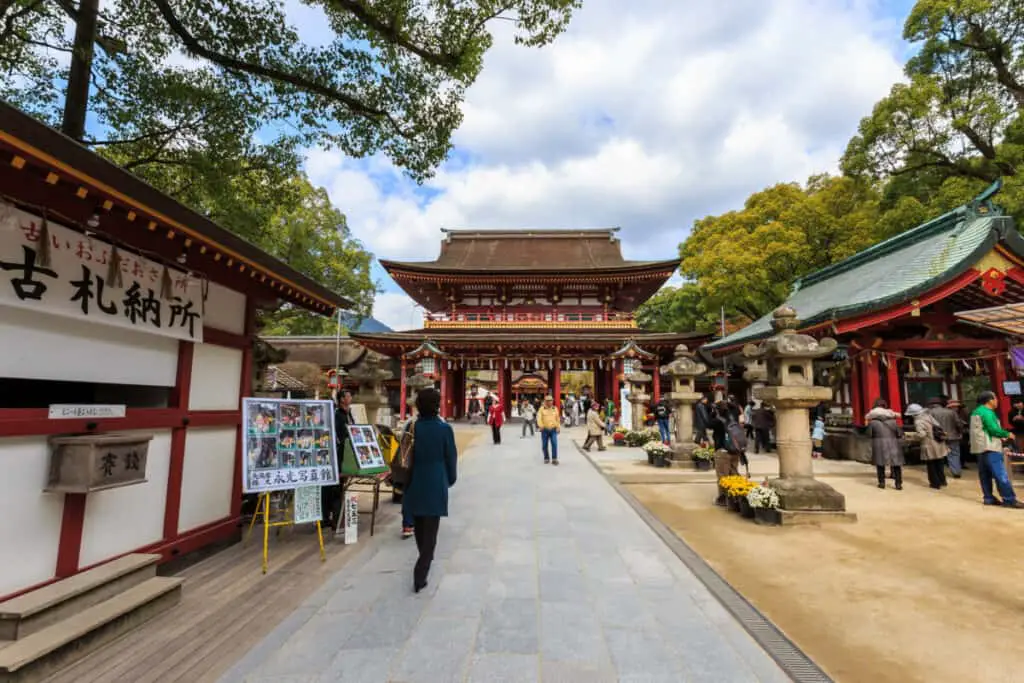
Dazaifu Tenmangu Shinto Shrine Official Website
Many historians have good reason to believe that the area is now known as Fukuoka was a critical place in the founding of Japan.
There are many ancient ruins and several unearthed documents showing how the area was very active with people during prehistoric times.
7th Century Government Offices
In the 7th century, Fukuoka was the Port of Dzaifu and it was the administrative heart of Kyushu. There are still ruins there to indicate the government’s existence with old offices and other buildings. Although the sites are old, the architecture is still fascinating to explore and admire.
Dzaifu Ruins Official Website Via Visit Fukuoka
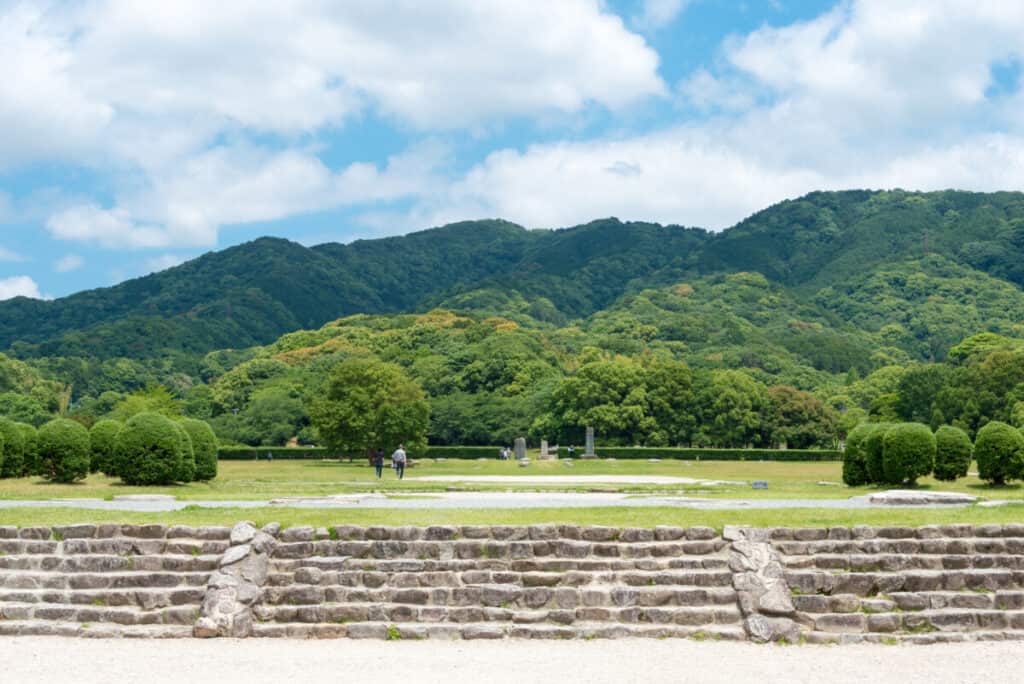
Many Temples And Shrines
There are also many major Buddhist and Shinto shrines and temples located here. Tengmangu and Kanzeon-ji are two of the most famous.
Kanzeon-ji Temple Official Website (Google Translate Needed)
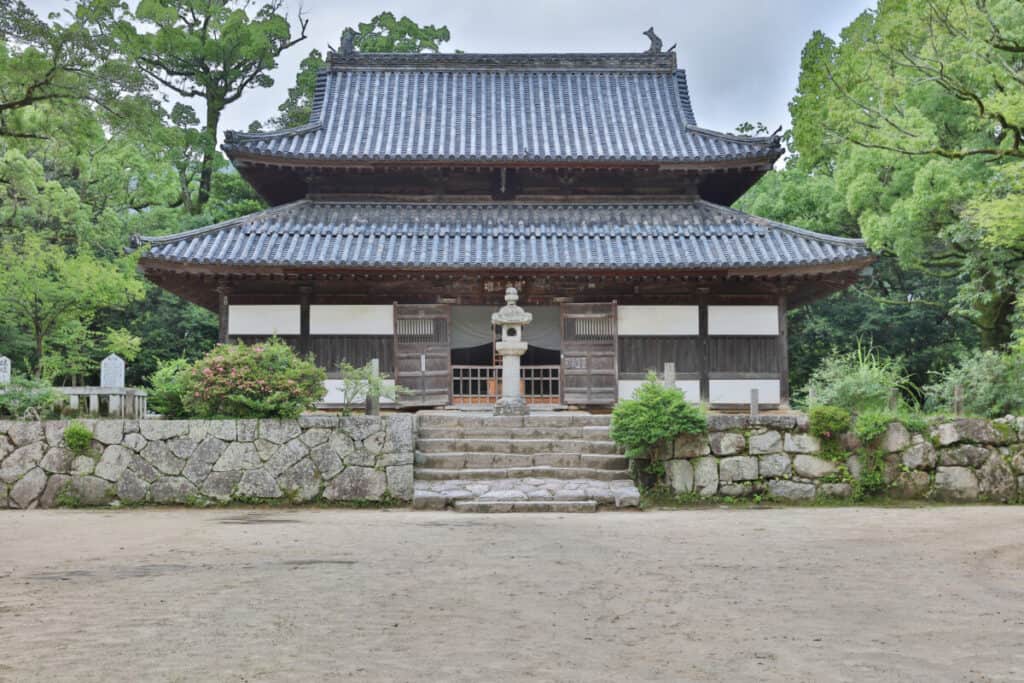
Tengamangu is the top shrine in dedication to scholars and scholarship. It enshrines Sugawara no Michizane, a great scholar, poet, and politician from the Heian Period.
Upon his death, he received the honor of becoming kami or god of Academic Achievement. Students come here to remember him and pray for success in their academic endeavors.
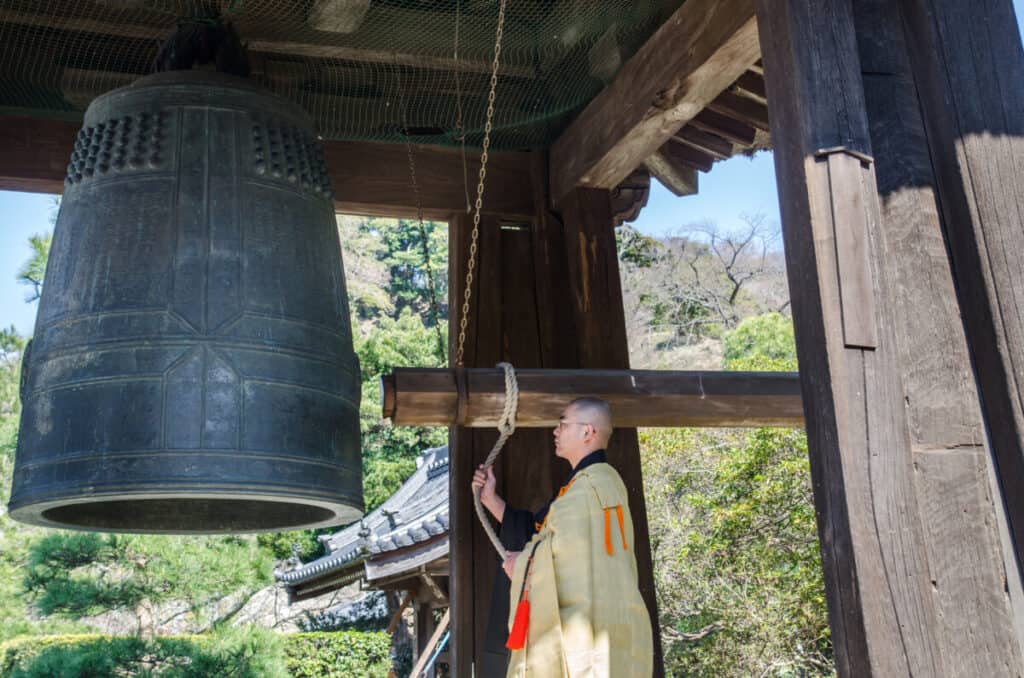
Built by Emperor Tenji, the Kanzeon-ji Shrine holds one of Japan’s oldest bells. Considered a national treasure, the bell is one of the top 100 sounds to experience in Japan.
13th Century Mongolian Invasion
It was also the prime location of the Mongol invasion as their landing point in the 13th century led by Kublai Khan. They did this after numerous envoys were sent by the empire. Khan wanted the reigning shoguns to acknowledge his authority over Japan as being part of the Mongolian Empire.
Many samurai and shogun refused. Therefore, Fukuoka was the site of many hardened battles but also an amazing victory. When Khan decided to invade Japan, there were only 40,000 Japanese fighters and the Khan took a humiliating defeat when a typhoon wiped out most of Khan’s army before the landing of the shores of Fukuoka.
The Merging of Two Cities
Fukuoka not only has old names, but it is also a combination of two cities that united in 1889. This is when Hakata, the main port city, merged with the former Fukuoka, which was a castle town that included Tenjin. And it remains unified today.
Hakata Station Official Website
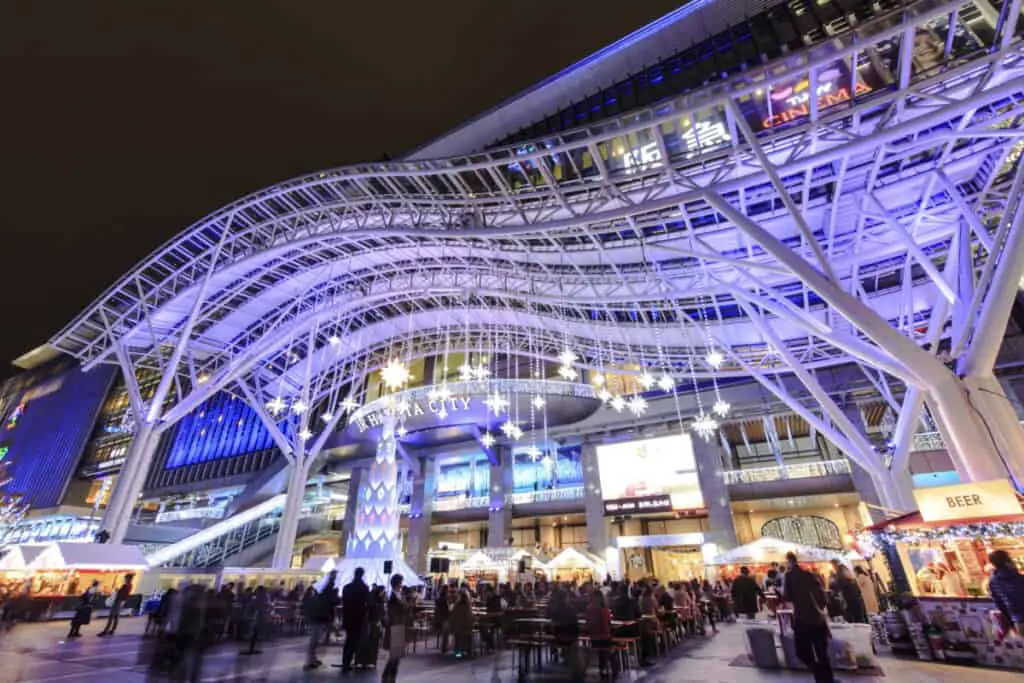
Fukuoka Today
Fukuoka is just as busy and bustling today as it was throughout history. Modern city planning provides ease of access with plenty of public transportation services. Local trains, busses, and a nearby airport have increased the area’s international appeal.
Fukuoka Airport Official Website
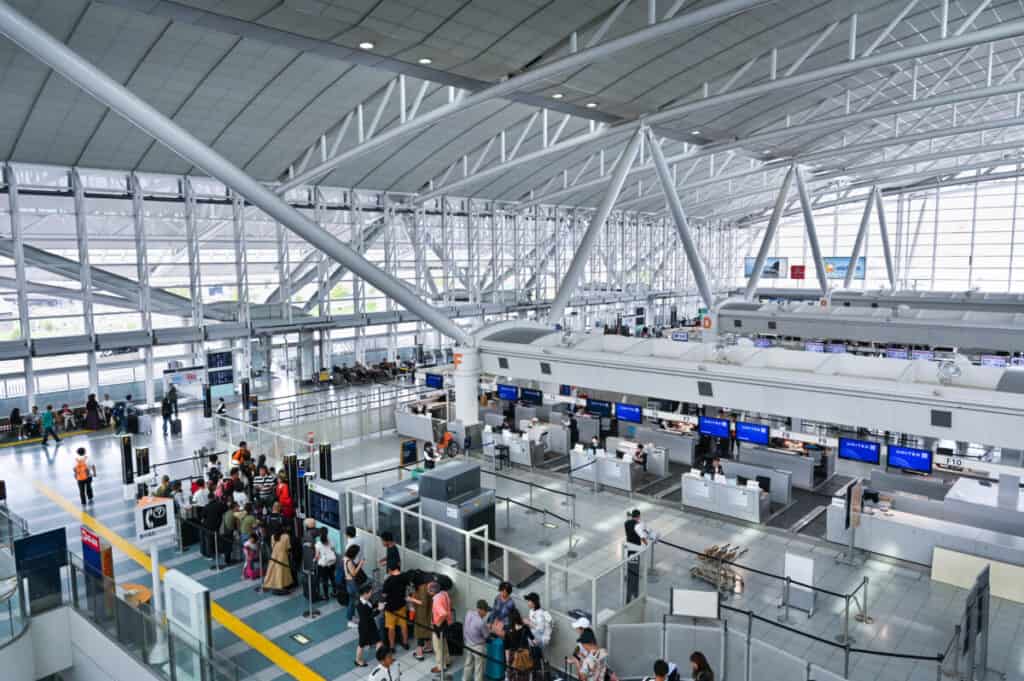
Hakata is still the name of one of Fukuoka’s central districts and the main railway station. This is the business hub of the city, which harkens back to its history as a merchant town.
It’s also the name of a ramen noodle dish famous in the area and a type of dialect people speak there.
The other half of the city is Tenjin, with Nakasu Island nestled between. This is the cultural side of the city. Here’s where you find all the boutiques, stores, bars, and restaurants. Nakasu is the city’s glitzy, gritty entertainment and comes to life when the sun goes down.
Fukuoka’s Food Scene
Known for its top-notch cuisine, Fukuoka actually prides itself on having an outstanding culinary culture. They have a history of cuisine with a long-standing tradition around noodles, many of which are still in the vast array of ramen dishes. The Jotenji Temple in Hakata originated both soba and udon noodles.
Best Restaurants In Fukuoka Via Tripadvisor
Yatai
The city offers the best yatai (street food stalls) throughout all of Japan, making it good, fast food for a nice low price. Their famous tonkatsu ramen costs around 280 yen, or about $2.50 USD.
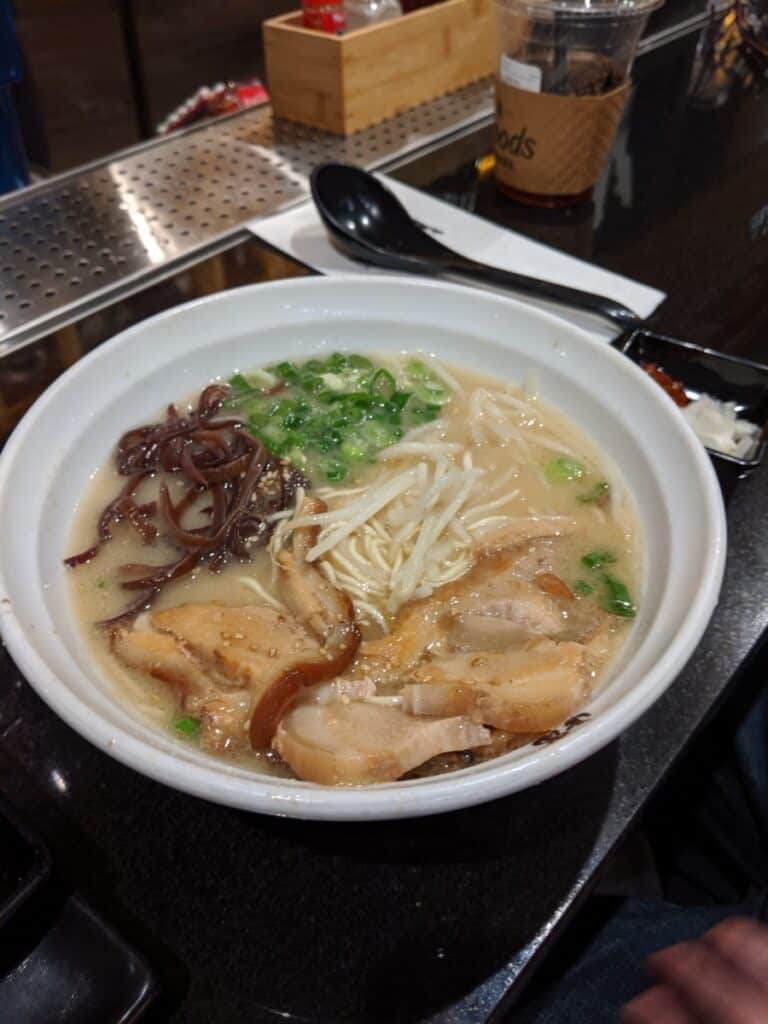
Ramen Noodle Dishes
One of the dishes the city boasts is their Hakata (Nagahama) ramen noodles. However, Fukuoka is the place to try all the different types and flavors of ramen noodles the city has to offer.
For fans of sushi and sashimi, Fukuoka has a saba dish that incorporates mackerel. It comes highly recommended.
Nagahama Fish Market Official Website (Google Translate Needed)
Their grand cuisine options are due mostly in part to the city’s famous fish market. It has the largest variety of fresh catch fish in Japan with an abundance of fresh options to pick from.
Most of the fish and seafood comes from the nearby Genkai-nada Sea, which faces the city.
Practical Functionality
The design and layout of Fukuoka is very well-organized and compact. It allows for locals to live and work while also providing an abundance of leisure and entertainment options.
There is also a myriad of shopping opportunities and other enhanced city attractions unlike the rest of Japan.
Best Shopping Locations In Fukuoka Via Tripadvisor
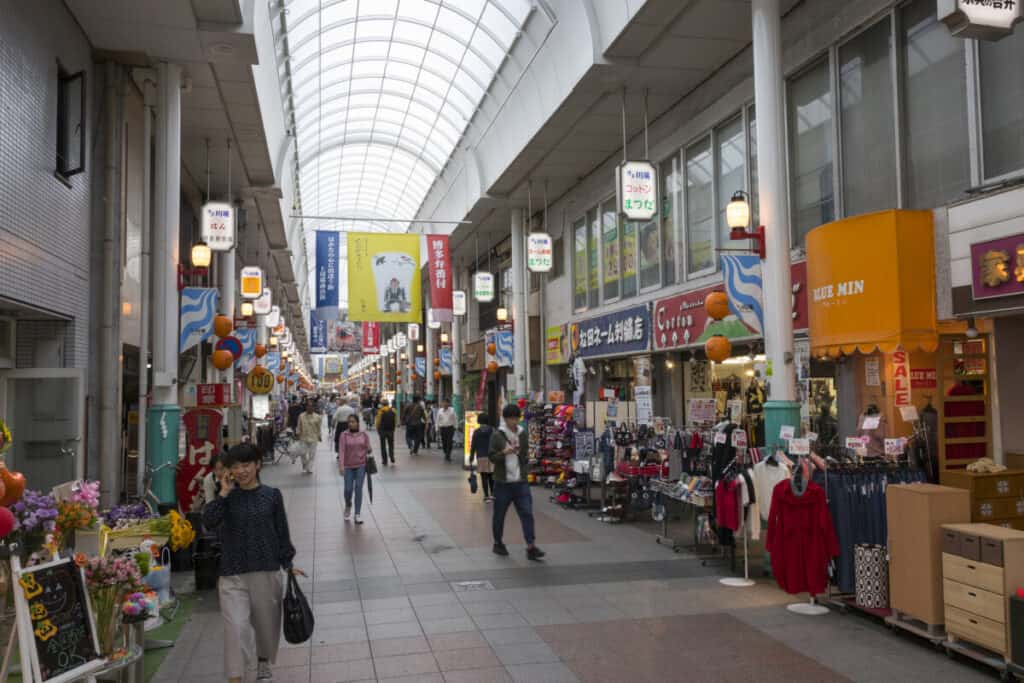
A City of Matsuri (Festivals)
Fukuoka is also famous for its festivals and grand events they hold throughout the year. The people here are very festive and hold fast to their traditions.
For instance, the Hakata Gion Yamakasa Festival occurs every July and has so for the last 770 years. Here, people race one-ton floats through the streets.
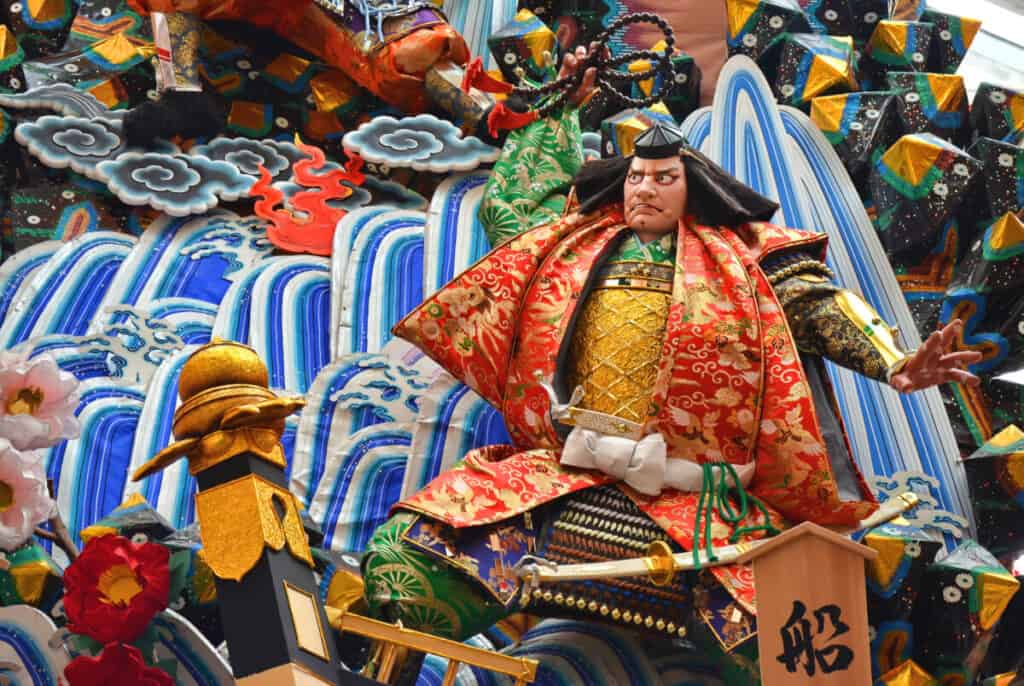
The Hakata Dontaku Festival occurs in early May during Golden Week and is the most popular festival during this time in Japan.
About two to three million people come from all over every year to participate. Golden Week, or Ōgon Shūkan (黄金週間), is a big festival time for Japan that includes several national holidays in a single week.
Fukuoka Festival Calendar Via Fukuoka City Guide
There are a plethora of music events, business conferences, and other smaller festivals that almost anyone can partake in and enjoy. These occur all year long and there’s never a shortage of things to do across the city.
Pristine Nature
What’s more, Fukuoka has a lush, green landscape complete with mountains that surround the majority of the city. Painted landscapes mean people can travel between the stunning beauty of nature and enjoy the urban scene in a single day.
Fukuoka Tower Official Website
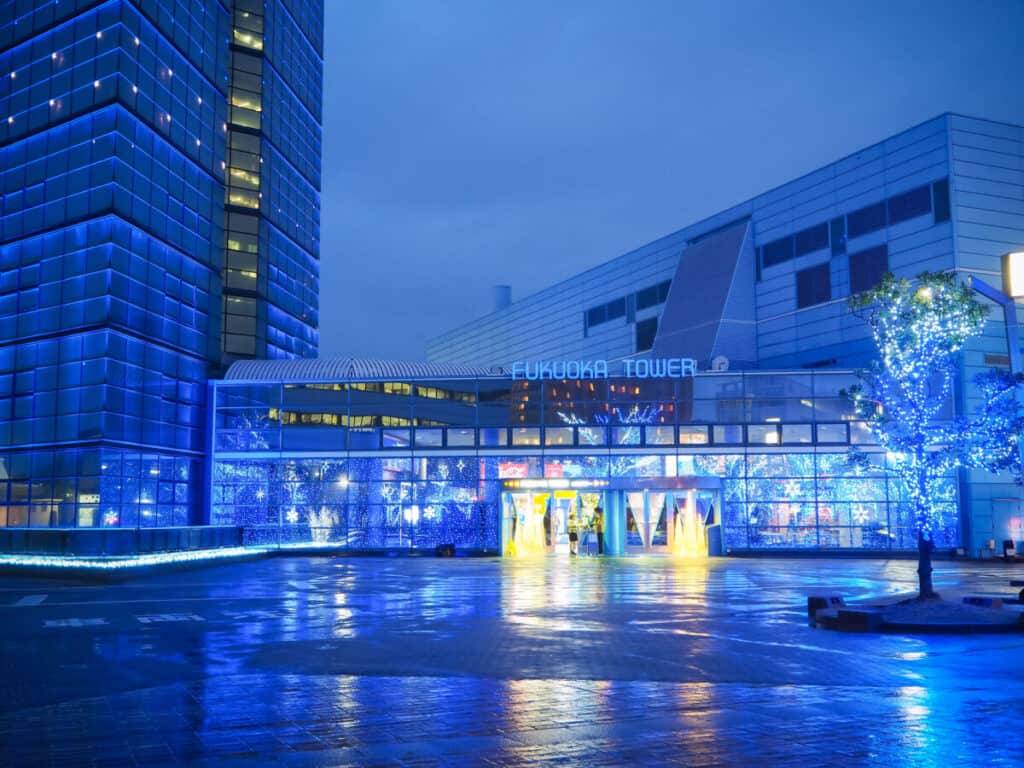
Although Fukuoka is a relatively small size, it’s easy to get out into the pristine wilderness surrounding the area. The Seaside Momochi includes the Fukuoka Tower, one of the city’s main attractions. In the summer, locals and tourists go to the Itoshima Peninsula for swimming, water sports, and cookouts.
Friendly Locals
While outwardly friendliness and hospitality aren’t always culturally accepted norms in Japan’s largest cities, Fukuoka breaks the mold. They’re known to have some of the friendliest people throughout the country.
Most of this may because of their exposure to the rest of the Asian world through interaction, immigration, and business and long-term trade across the centuries.
Fabulous Climate
Just as the locals are warm and agreeable, so is the climate. Some have even dubbed it the “Mediterranean of Japan.” The subtropical climate complete with humid summers and very mild winters makes for ideal living conditions.
The average annual temperature in Fukuoka is about 61°F (16.3°C). In winter, it almost never drops to below freezing (annual normal low 38 F) and it rarely, if ever, snows in winter or spring.
But the area does have monsoon and typhoon seasons that begin in July and last all the way into August and September.
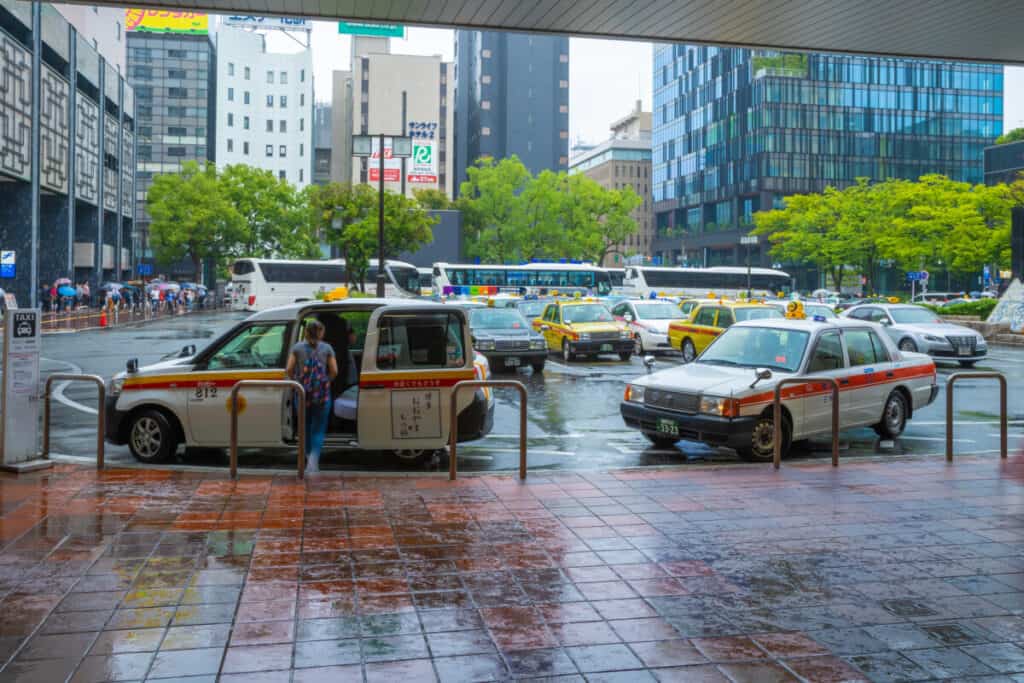
Autumn Is Ideal
That said, autumn is the best season to visit Fukuoka. The environment is dry with superb landscapes and forest areas changing into autumn hues and the natural views are indescribably breathtaking.
The entire surrounding mountains fill up with delicate pinks and purples from the cosmos flowers.
Twelve Attractions In Fukuoka Not To Miss:
- Ohori Park
- Dazaifu Tenman-gu Shrine
- Fukuoka Tower
- Uminonakamichi Seaside Park
- Fukuoka Castle Ruins
- Kushida Shrine
- Marine World
- Fukuoka Asian Art Museum
- Kyushu National Museum
- Fukuoka Zoo and Botanical Garden
- Nanzoin Buddhist Temple
- Umi-no-Nakamichi Area
Impressive Springtime
But, the spring is also just as impressive, especially when their cherry blossom season comes into full swing. From about mid-March through April, they have many prime spots for viewing a plethora of sakura, or cherry blossom trees.

